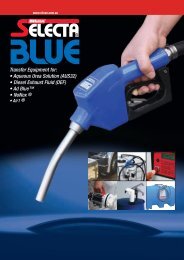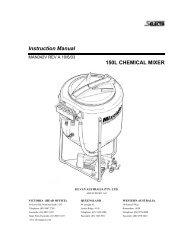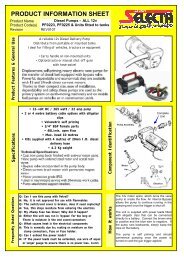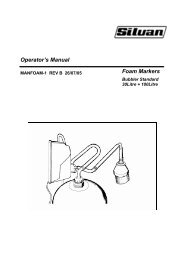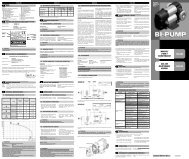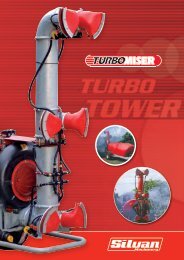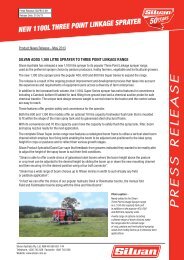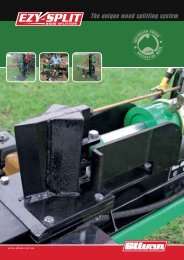Spray Technology Reference Guide: Understanding Drop ... - TeeJet
Spray Technology Reference Guide: Understanding Drop ... - TeeJet
Spray Technology Reference Guide: Understanding Drop ... - TeeJet
Create successful ePaper yourself
Turn your PDF publications into a flip-book with our unique Google optimized e-Paper software.
Section 3<br />
<br />
<br />
<br />
<br />
<br />
<br />
<br />
<br />
Figure 1. Optical imaging analyzer.<br />
Laser diffraction analyzers<br />
Laser diffraction analyzers are also spatial sampling devices but fall<br />
into the non-imaging (ensemble) category. These analyzers consist<br />
of a transmitter, receiver and computer. The technique is based on<br />
measuring the scattered light intensity caused by the drops as they<br />
pass through the analyzer sampling area.<br />
The scattered light intensity is measured using a series of semicircular<br />
photo-diodes housed in the receiver unit. A curve-fitting program<br />
is used to convert the light intensity distribution into any of several<br />
empirical drop size distribution functions. The range of instruments<br />
using this technique is 1.2 to 1,800 µm, although recently some<br />
manufacturers have increased the measurement range up to 3,000 µm.<br />
This instrument is best suited for measuring small capacity two-fluid,<br />
hydraulic and flat spray nozzles and is useful for comparisons and<br />
quick evaluation of prototype nozzles. The most serious limitation of this<br />
technique is known as multiple scattering. Multiple scattering occurs<br />
when spray densities are too high resulting in the light being scattered<br />
by multiple drops before reaching the detector. This introduces errors in<br />
computing the drop size distribution.




